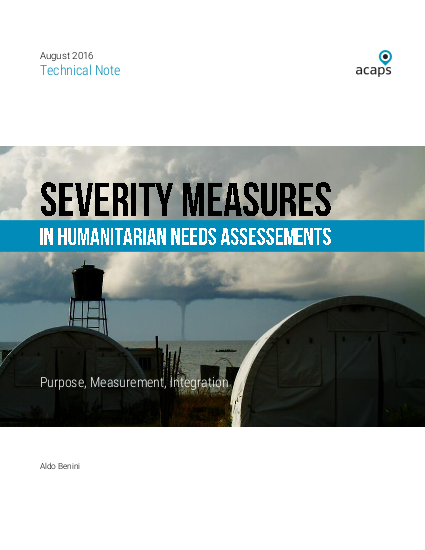
Severity is a key parameter in humanitarian decision making. “Severe” is part of ordinary language; “severity” more institutional. We make absolute statements (“The patient is in a severe condition”) as well as comparative ones (“The townspeople are even more severely impacted than the farmers”). The bases of such judgments are not always clear. By contrast, needs assessments in humanitarian action strive to define severity measures that are transparent, tightly related to needs concepts, and fit to support valid comparisons.
The function of severity measures is to substantiate priorities that, together with parameters like access and cost, guide decisions on the humanitarian response. Severity measures condense, in one number or one verbal scale, elements that influence judgments on priority – elements that are conceptually different, or arrive from separate information sources. Such constructs have been around for several decades, at first in public health. The humanitarian community developed its own gradually, such as in famine early warning and in the UN Food and Agriculture Organization’s Integrated Phase Classification.
For the past several years, ACAPS has assisted the development and application of severity measures. The assistance was provided in the shape of analytic tools, personnel on mission as well as remote statistical support. This note builds on key lessons from past needs assessments and recommends good practices for how to measure severity for future ones. Where we recommend more involved procedures for special situations, we refer the reader to published notes that demonstrate them in the requisite detail.